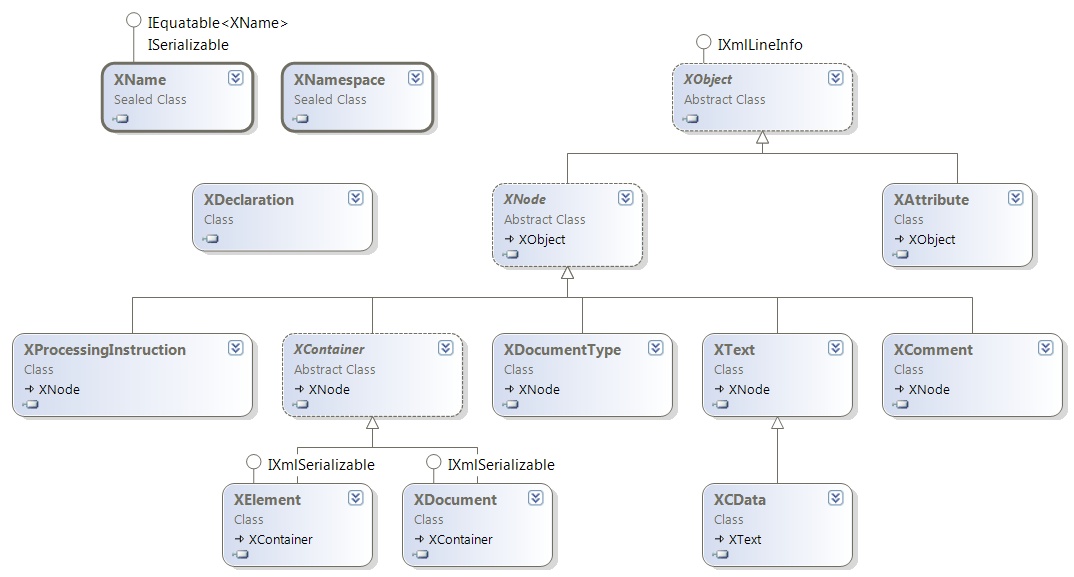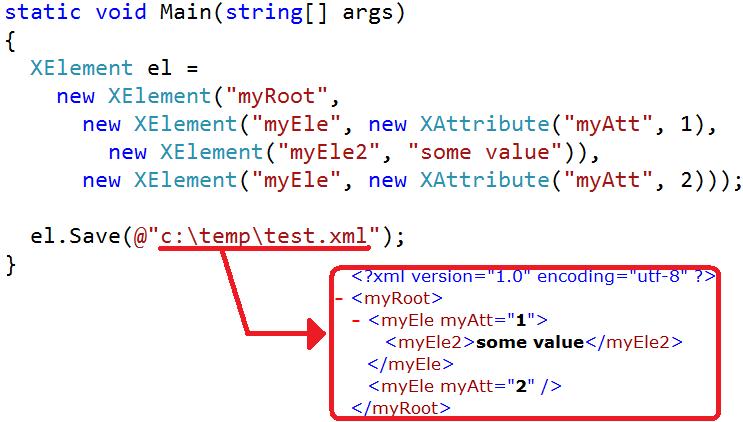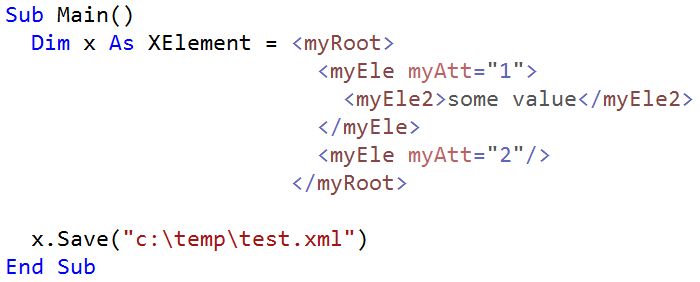Fri, May 11, 2007, 09:36 AM under
dotNET |
Orcas |
LINQ
Part of .NET Framework 3.5 is a new framework assembly: System.Xml.Linq dll. Now, I know most people describe this in the context of LINQ (it used to be called XLinq) and indeed it works very well with LINQ but I wanted to stress here that effectively this is a standalone new XML API. You can use it without ever going anywhere near the LINQ syntax.
There are 3 namespaces inside the assembly the main one being System.Xml.Linq with 23 types, the most important shown below:

The ones you are most likely to use all the time are XElement and XAttribute (I bet you thought I'd say XDocument but actually you don't really have to use that one!). So why yet another new API for XML? Because this one is really cool! One aspect of the coolness is the way you create XML documents/fragments: You can do that in a single statement where the creation of XML items and their association takes place in the same step! Also while writing that single step/statement, you get to do it in the natural way that you think of the layout of the XML document. For example, in the following screenshot I have captured the code and the document it creates side by side. Can you see how intuitive it is?

Another aspect of the coolness of the API is that you can indeed use it with the LINQ syntax both for creation and for querying. To assist with that there are a bunch of extension methods in 3 static classes: System.Xml.Linq.Extensions, System.Xml.Schema.Extensions and System.Xml.XPath.Extensions. FYI, there are no other types in the Schema and XPath namespaces. I'll let you explore that yourself in the
Beta 1 of Orcas.
The coolest thing about this API however is only available to Visual Basic developers. The VB compiler is smart enough to let you type in XML literals while it produces the necessary calls to the new XML classes. The code I showed above in C# 3.0 can be written in VB9 as per the following:

To see more about creating the documents, how LINQ syntax can be thrown in and how VB syntax with XML truly rocks you need some nuggets of course. Well, my colleague beat me to it so I encourage you to view
his videos here (
he is a bit behind the times using the March CTP so note that adding a reference to System.Core and System.Xml.Linq is done for you in Beta 1 for 3.5 projects).